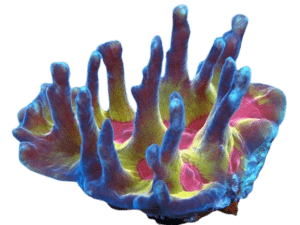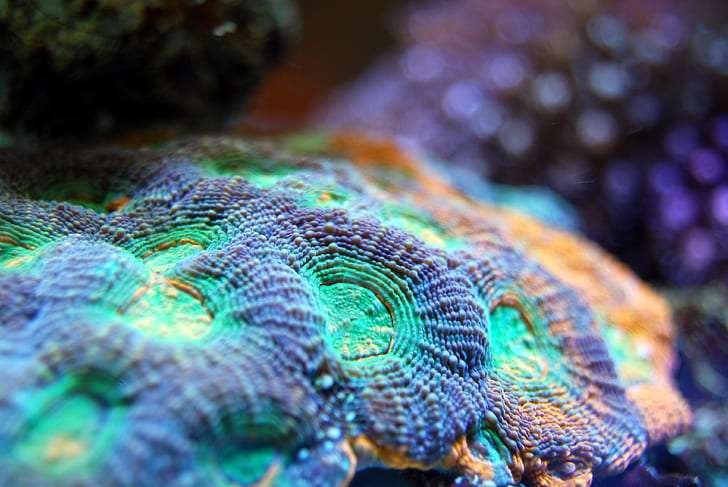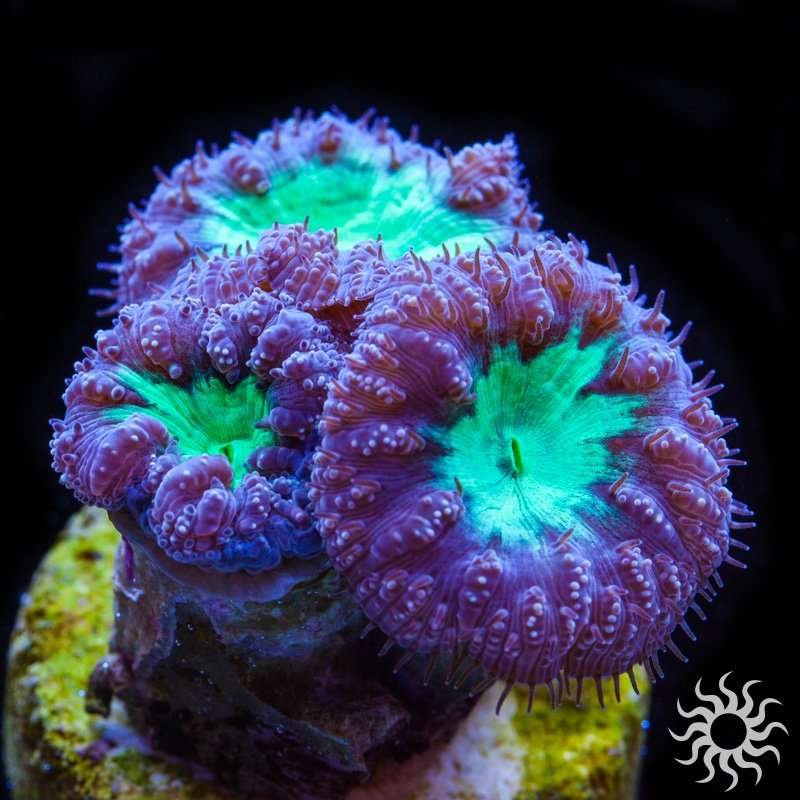Rainbow Pectinia Coral

The rainbow color of Rainbow Pectinia Coral looks beautiful next to other corals in a tank. It is a great piece of decor for any reef tank because of the way it is built.
Our Rainbow Pectina was put on a small rock that we had cut in half and then stuck to the back of our 800-gallon reef tank. This spot has been great for it because it keeps it away from our other valuable corals.
Setting up
Attach the Rainbow Pectinia to a rock or ledge in the bottom two-thirds of the tank with IC gel glue or putty to mount it. Make sure they get mild currents and light that is low to moderate. This coral has sweeper tentacles that can sting other corals close at night, so leave 3″ to 4″ of space around it.
Being fed
Even though zooxanthellae, which are symbiotic algae that live inside them, provide some of their energy through photosynthesis, they can still benefit from extra Oyster-Feast, Roti-Feast, or small mysis shrimp.
Tentacles
It has cleaning tentacles that come out at night, so keep other corals 3 to 4 inches away from it.
Needs for Lighting and Flow
The Rainbow Pectinia Coral needs water that flows slowly and light that is dim to mild (PAR 150–250). Space Invader Pectinia Corals can be grown with T5s, Metal Halides, or LEDs as long as they get the right amount of PAR. The best coloring comes from a 14K to 20K color spectrum.
water Conditions
Temperature: 75 to 80 °F Specific Gravity: 1.024 to 1.026 (1.025 is best)
There is 8.1 to 8.4 pH and 420 to 440 ppm calcium.
8 to 9.5 dKH for alkalinity
Magnesium (Mg): 1260 to 1350 parts per million
^10 ppm of nitrates
`0.10 ppm for phosphones
Chemistry of Water
Calcium (420–440 ppm), alkalinity (8–9.5 dKH; change to 7-8 if you are carbon dosing), and magnesium (1260–1350 ppm) levels must be kept at the right amounts. Increasing magnesium levels slowly, up to 1400 to 1600 ppm, can help stop algae blooms. During this process, make sure that calcium and pH levels stay the same. Do not let phosphates or nitrates go above 0.10 ppm or 10 ppm. When nitrate levels reach 10 ppm, you should change the water, and when phosphate levels hit 0.10 ppm, you should change the media. By mixing the phosphate media with water, Media Reactors are the best way to use it.
Dosing
Saltwater Aquarium Master suggests using dosing pumps to automatically add additives and keep the levels in your tank steady. With a dosing pump, you don’t have to add calcium, alkalinity, and magnesium to your tank by hand twice to four times a week. Adding these additives in small amounts on a regular basis is good for your tank because it keeps the levels stable. When we went from physically dosing three times a week to 70 automatic dosings a week, our tanks got a lot better, and we were able to get a lot more done.


